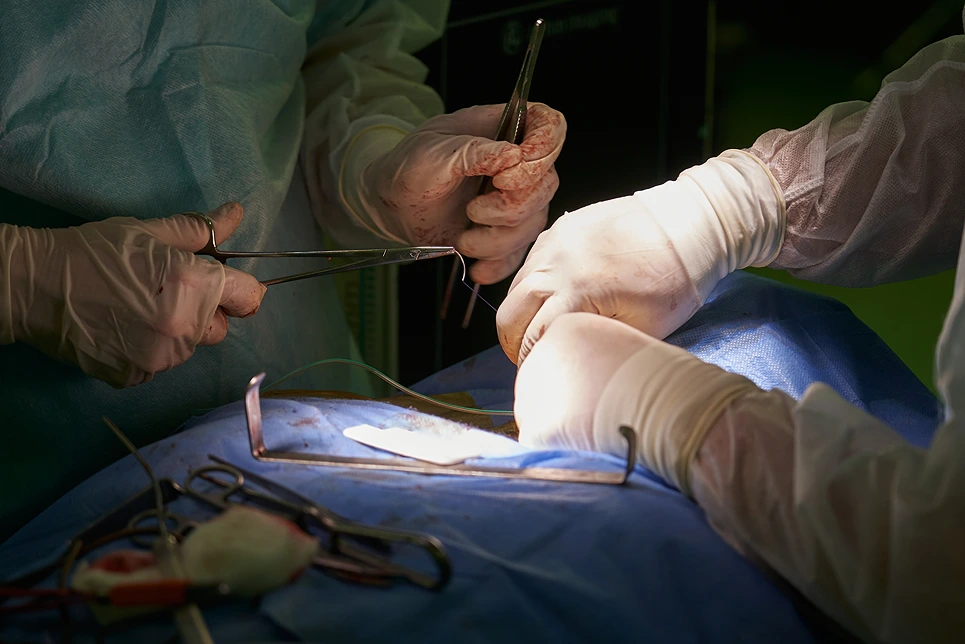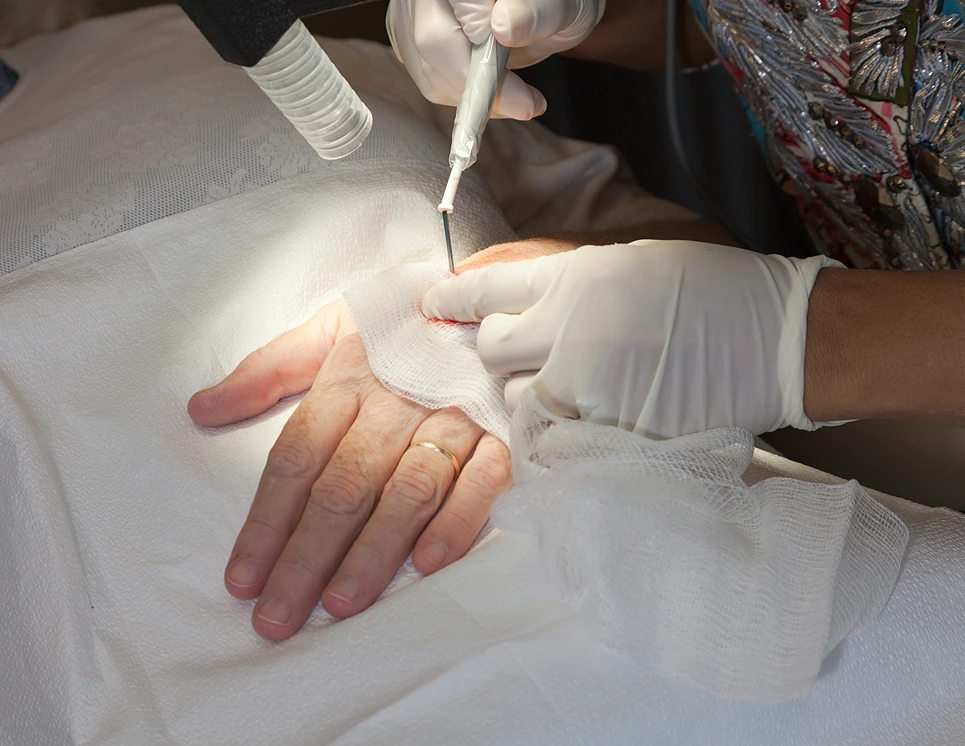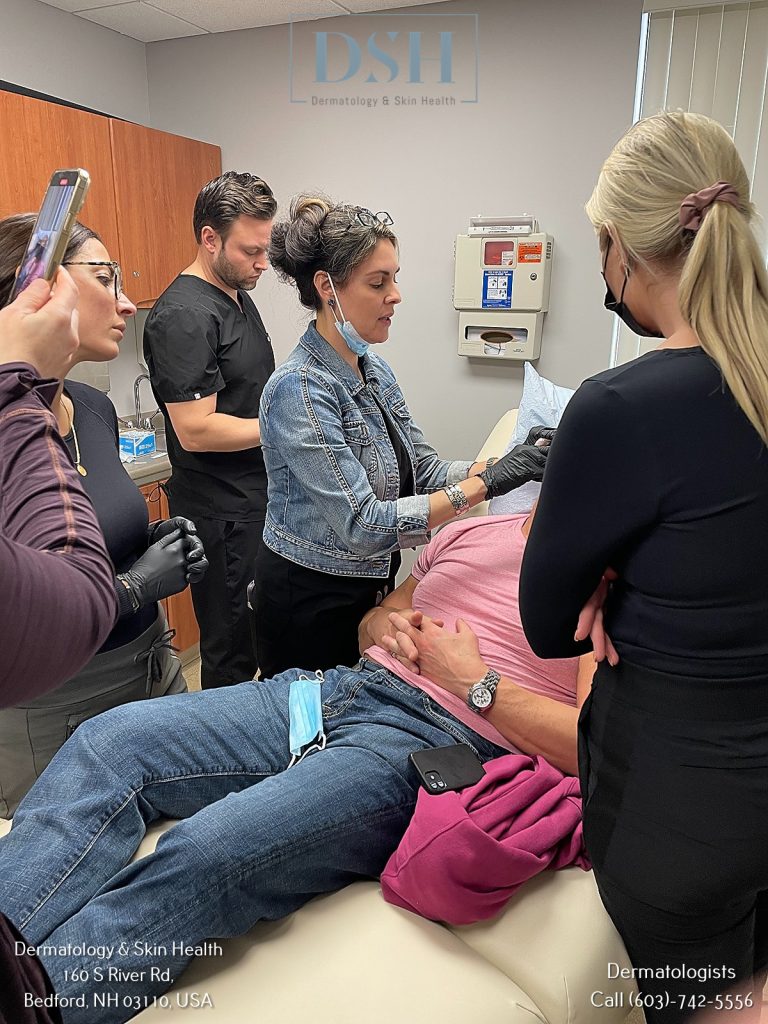

Mohs surgery is a specialized, precise technique that removes skin cancer layer-by-layer under microscopic guidance, offering the highest cure rates and optimal tissue preservation for certain types of skin cancer.

Skin cancer is the most common cancer in the United States, with over 5 million cases treated each year.
Though mostly curable if caught early, some types of skin cancer like squamous cell carcinoma and basal cell carcinoma can grow deep roots and spread if left untreated.
In these cases, a precise, layered approach is needed to remove all cancerous tissue while sparing as much healthy skin as possible.
This is where Mohs surgery comes in. While most people are familiar with basic surgical excision for skin cancer removal, Mohs offers a more targeted, controlled technique.
Mohs surgery, named after Dr. Frederic Mohs who developed it in the 1930s, removes skin cancer in stages under microscopic guidance. Here’s an overview of the specialized Mohs technique:
Traditional excision methods don’t allow for this real-time microscopic analysis. The removed tissue is simply sent to a lab, resulting in a 1-2 week wait for results. If cancer cells are found post-surgery, a second operation is required to clear margins.
Mohs surgery allows complete cancer removal in a single procedure while removing the least amount of healthy tissue. This makes it a highly effective technique.
The unique precision of Mohs surgery makes it very effective for common skin cancers that take root and spread:
BCC, the most common skin cancer, grows slowly and rarely metastasizes. But some subtypes have root-like extensions that invade deep below the skin. Mohs allows complete tracing and removal of these cancerous roots.
SCC also grows downward and sideways into surrounding tissues. Mohs helps evaluate the hard-to-see periphery of these tumors to confirm clear margins.
For skin cancers that return despite initial treatment, Mohs provides the greatest chance for cure. The microscopic approach helps ensure no roots or traces are left behind.
Delicate areas like the face, head, hands, and genitals benefit from Mohs due to better preservation of precious healthy tissue.

In addition to its specialized surgical technique, Mohs surgery boasts several advantages that make it one of the “gold standard” treatments for high-risk skin cancers:
While generally safe and highly effective, Mohs surgery does carry some potential risks and limitations to consider:
Want to know what your Mohs surgery day will really be like? Here’s a step-by-step overview:
During Mohs Surgery
After Mohs Surgery

The good news is that Mohs surgery is usually covered by insurance, including Medicare, when medically necessary to treat an existing skin cancer. Out-of-pocket costs depend on your specific insurance plan and deductible amount. On average though, expect to pay:
For complex or recurrent cancers requiring additional Mohs stages, costs may run higher. Verify your insurance benefits and get a cost estimate ahead of time so you aren’t surprised by bills. Reconstructive plastic surgery to repair larger defects also adds to the overall cost.
Finding an experienced, reputable Mohs surgeon is key to getting the best results. Start by searching the American College of Mohs Surgery website, which certifies surgeons based on extensive training requirements. Here are other tips:
During consultations, come prepared with questions including:

Mohs micrographic surgery offers an unparalleled level of accuracy, control, and tissue preservation for high-risk skin cancers. While no surgery is risk-free, Mohs provides the highest cure rates and optimal cosmetic results.
Working with a skilled, experienced Mohs surgeon is key to achieving success. For certain recurrent or aggressive skin cancers, Mohs may be the most effective option and is worth discussing with your dermatologist.
If your desired appointment type or preferred provider is unavailable online, kindly call (978) 525-0100 for Peabody, MA and (603) 742-5556 for all New Hampshire locations. Alternatively please feel free to send us your request via the patient portal, or via email at info@dermskinhealth.com
*For medical dermatology appointments in MA please dial (978) 525-0100 or fill out the appointment request form above.